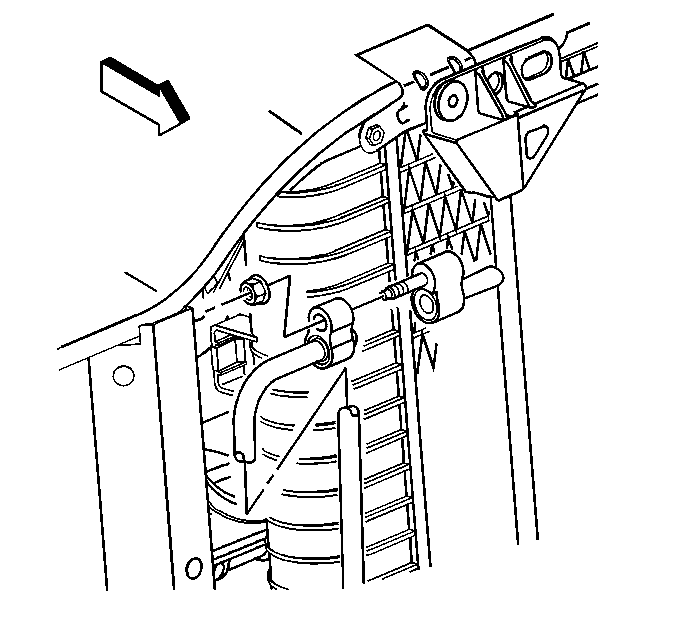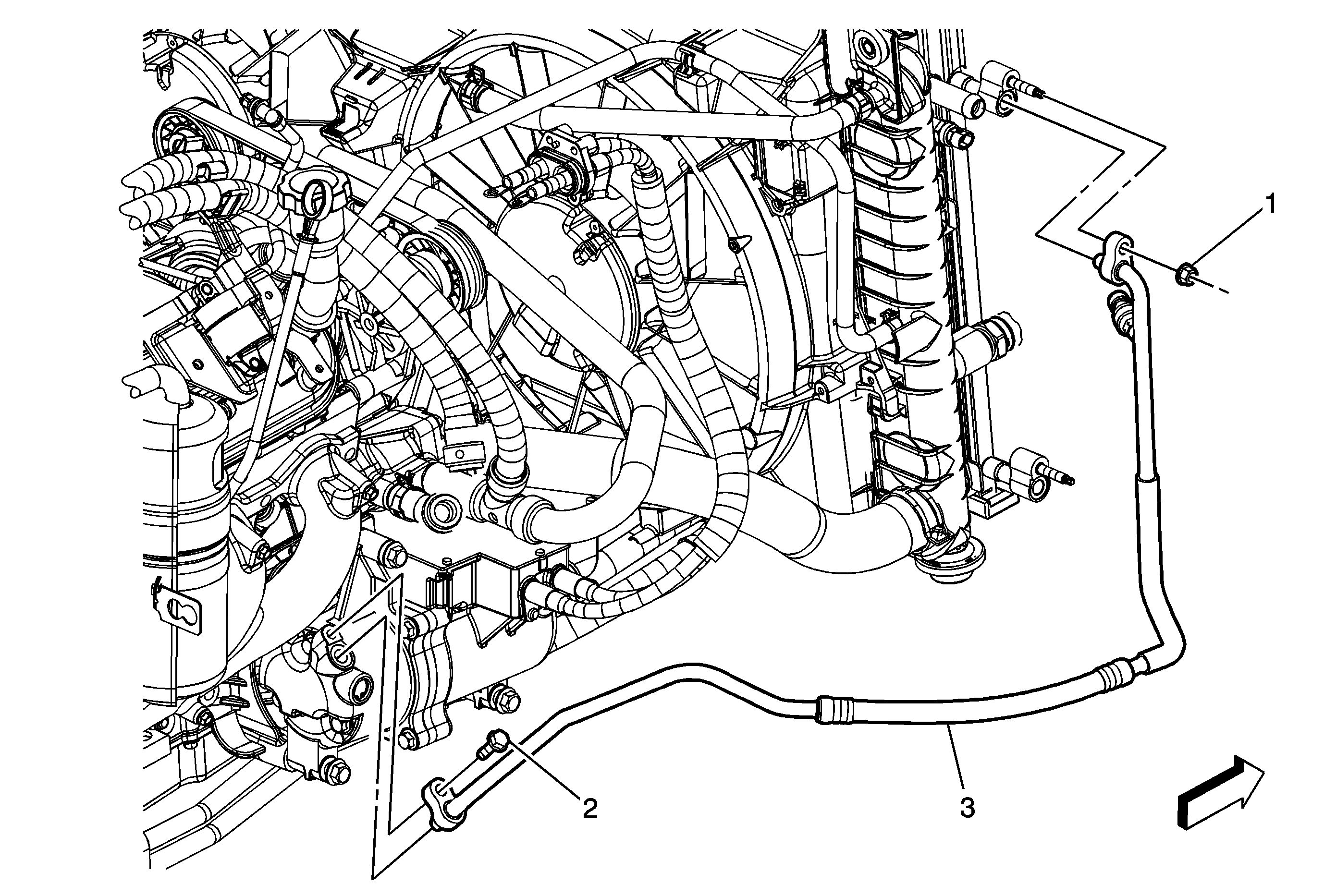For 1990-2009 cars only
Discharge Hose Replacement LY2, LMF, L76 and L92
Special Tools
J 39400-A Halogen Leak Detector
Removal Procedure
- Recover the refrigerant. Refer to Refrigerant Recovery and Recharging.
- Remove the discharge hose mounting bolt (2) from the A/C compressor.
- Remove the discharge hose (1) from the A/C compressor.
- Remove the upper radiator baffle. Refer to Radiator Air Upper Baffle and Deflector Replacement.
- Remove the discharge hose nut from the condenser.
- Remove the discharge hose from the condenser.
- Disconnect the electrical connector from the A/C recirculation switch.
- Remove the discharge hose from the vehicle.
- Discard all of the used sealing washers. Cap the system openings.


Installation Procedure
- Install the discharge hose (1) to the vehicle.
- Install the discharge hose to the condenser using new sealing washers. Refer to Sealing Washer Replacement.
- Install the discharge hose nut to the condenser and tighten to 16 N·m (12 lb ft).
- Install the upper air baffle. Refer to Radiator Air Upper Baffle and Deflector Replacement.
- Connect the electrical connector to the A/C recirculation switch.
- Install the discharge hose (1) to the A/C compressor using new sealing washers. Refer to Sealing Washer Replacement.
- Install the discharge hose mounting bolt and tighten to 16 N·m (12 lb ft).
- Evacuate and recharge the A/C system. Refer to Refrigerant Recovery and Recharging.
- Leak test the fittings of the component using the J 39400-A .


Caution: Refer to Fastener Caution in the Preface section.

Discharge Hose Replacement HP2

Callout | Component Name | ||||||
|---|---|---|---|---|---|---|---|
|
Danger: Always perform the High Voltage Disabling procedure prior to servicing any High Voltage component or connection. Personal Protection Equipment (PPE) and proper procedures must be followed. The High Voltage Disabling procedure will perform the following tasks:
Preliminary Procedures
| |||||||
1 | Discharge Hose Nut Caution: Refer to Fastener Caution in the Preface section. Tighten | ||||||
2 | Discharge Hose Bolt Tighten | ||||||
3 | Discharge Hose Procedure
| ||||||
